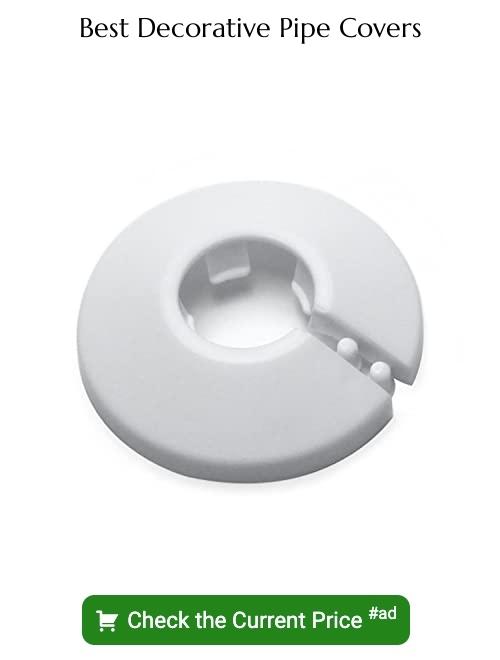Last updated on
Discover innovative and visually appealing solutions to conceal unsightly plumbing pipes, adding flair and functionality to your living spaces.
Plumbing pipes are an essential part of any home, but let’s be honest, they’re not exactly the most aesthetically pleasing feature. Fortunately, there are plenty of creative ways to hide those unsightly pipes and add some style to your space at the same time.
Whether you’re dealing with exposed pipes in your bathroom or kitchen, or simply want to give your basement a more polished look, we’ve got you covered. In this article, we’ll explore some innovative ideas for disguising plumbing pipes that will have you saying goodbye to eyesores and hello to beautiful decor.
So let’s get started!
Table of Contents
Decorative Casings
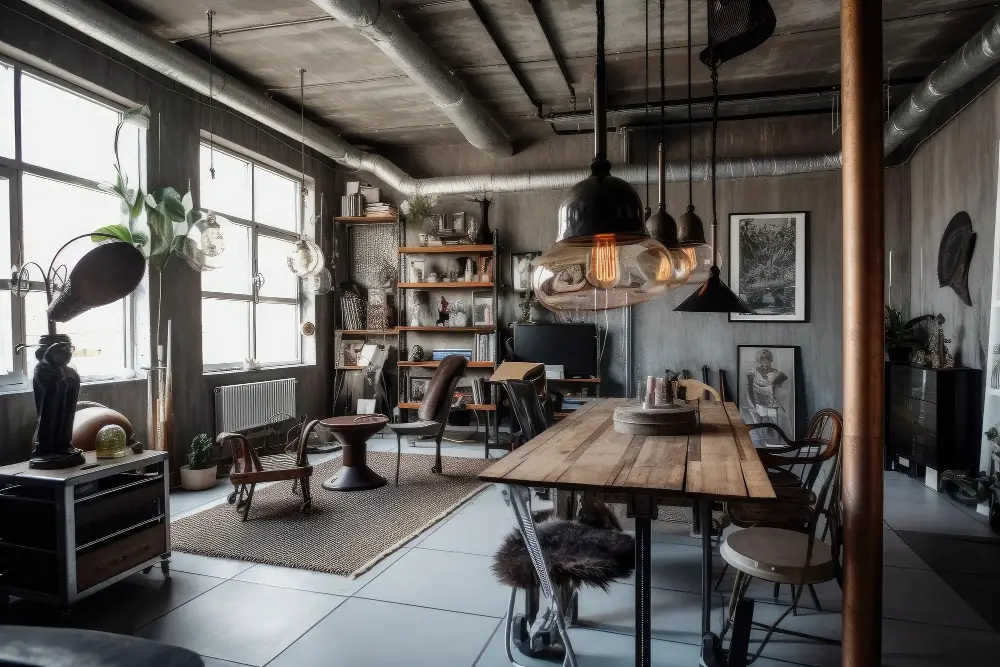
Decorative Casings: One of the most popular ways to hide plumbing pipes is by using decorative casings. These are essentially covers that can be placed over exposed pipes, giving them a more polished and finished look.
Decorative casings come in a variety of materials, including wood, metal, and PVC. They can also be painted or stained to match your existing decor.
Wooden casings are perfect for creating a rustic or natural feel in your home while metal ones add an industrial touch to any space. PVC options offer durability and affordability without sacrificing style.
When choosing decorative casing for your plumbing pipes, consider the size and shape of the pipe as well as its location within your home. You want something that will fit snugly around the pipe without being too bulky or obtrusive.
Plumbing Artwork
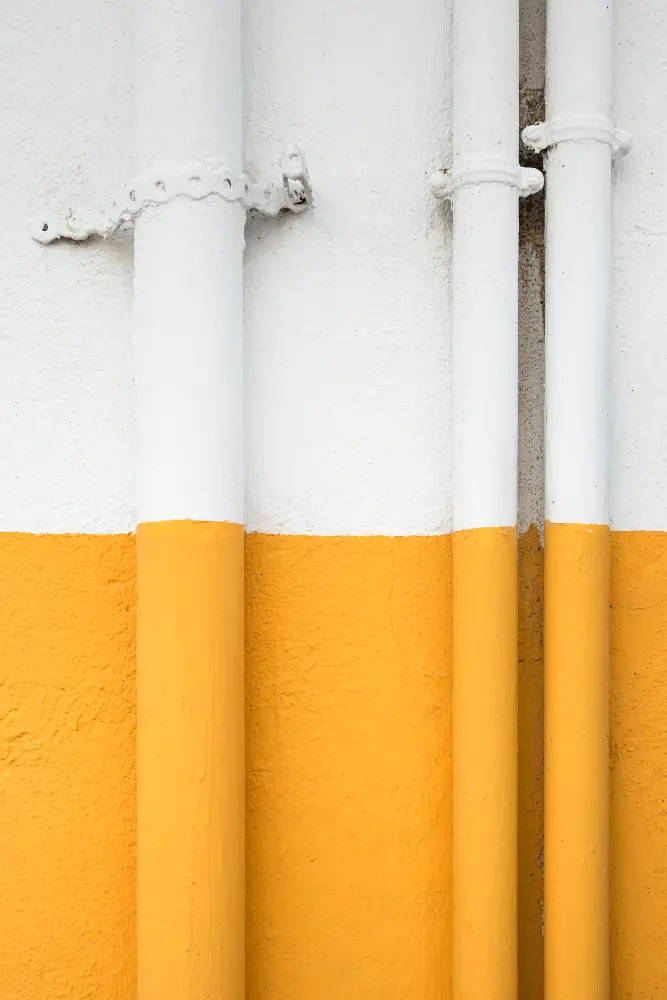
One idea is to paint the pipes in bold colors or patterns that complement your decor. You could also wrap them in colorful tape or fabric for a unique look.
Another option is to use the pipes as part of a larger artwork installation. For example, you could create an industrial-style sculpture using various pipe pieces and fittings, then display it on a wall or shelf.
If you’re feeling particularly adventurous, consider commissioning an artist to create custom artwork incorporating plumbing elements specifically for your home.
Faux Walls
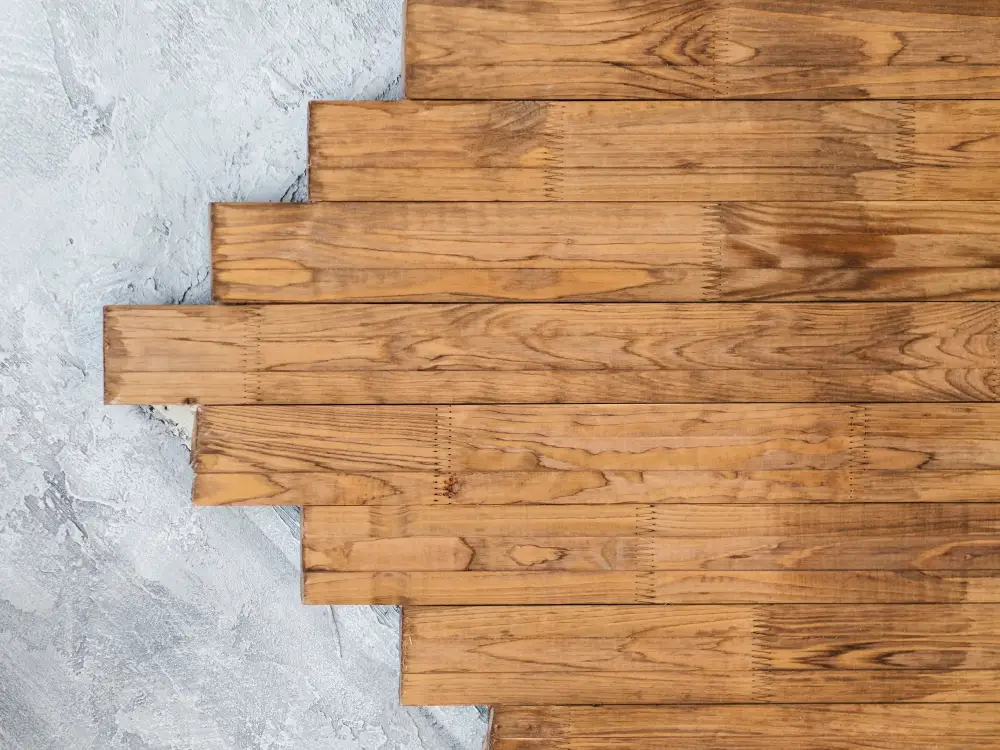
This involves building a false wall in front of the existing one, which can be used to conceal any unsightly pipes or wiring. Faux walls are an excellent option for those who want to add some extra insulation or soundproofing as well.
There are several materials you can use when constructing your faux wall, including drywall, plywood, and even fabric panels. You’ll need some basic carpentry skills and tools like a saw and drill if you plan on doing it yourself.
Once your faux wall is up, you can paint it in any color that matches your decor style or add wallpaper for added texture. The best part about this solution is that it’s completely customizable; you can make the fake walls as thick or thin as needed depending on how much space there is between the real walls and where exactly those pesky pipes run through them.
Clever Shelving
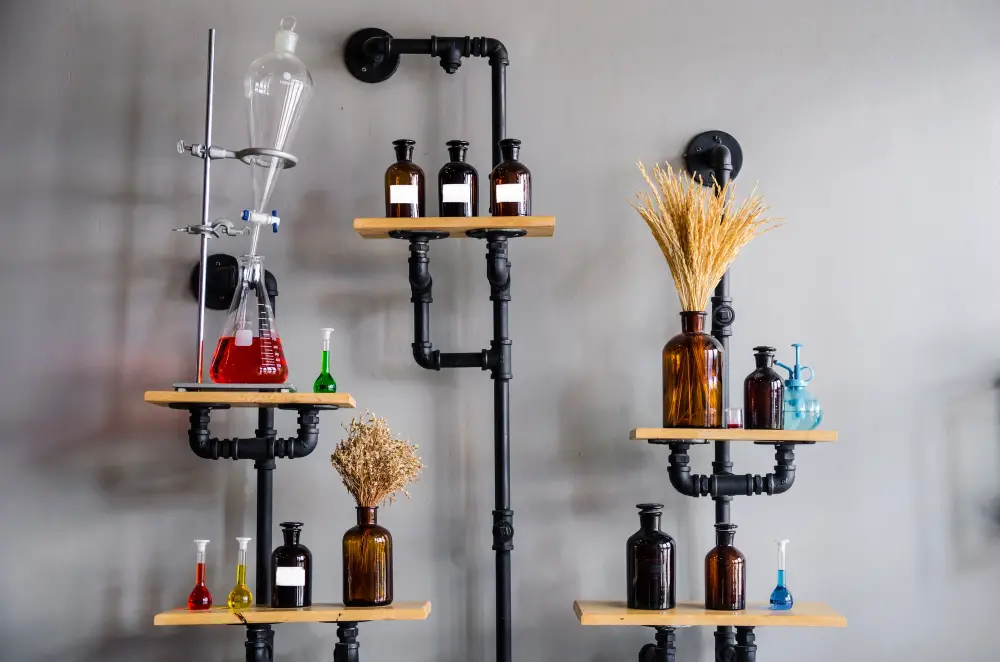
You can install shelves above or around the pipes, creating an attractive display that draws attention away from the unsightly plumbing. Floating shelves are particularly effective for this purpose, as they give the illusion of more space and can be customized to fit any decor style.
One clever shelving idea is to create a bookshelf around exposed pipes in your living room or home office. This not only hides the pipes but also adds some visual interest and personality to your space.
Another option is using open shelving in your kitchen or bathroom, which allows you easy access to items while keeping those pesky pipe lines out of sight. You could even use decorative baskets on these shelves for added texture and functionality.
Built-in Furniture
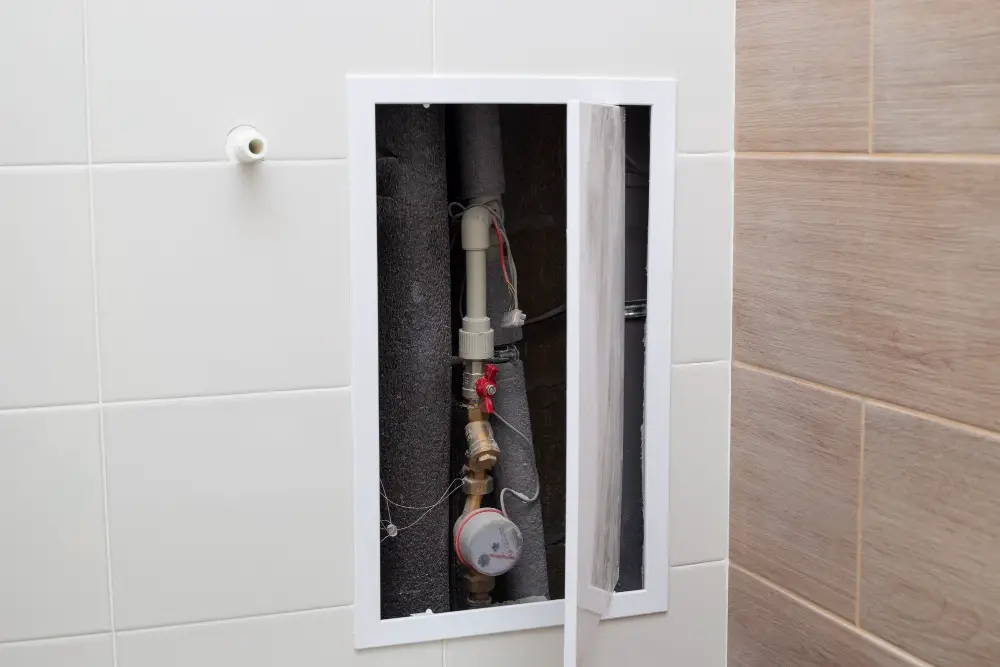
This approach not only conceals the pipes but also adds functionality and style to your living space. For instance, you can create a custom bookshelf or cabinet that covers up exposed pipes in your living room or bedroom.
In the bathroom, consider installing a vanity with built-in storage that hides unsightly plumbing while providing ample space for toiletries and towels. You could even add an extra shelf above the toilet tank to store additional items.
The beauty of this solution is that it allows you to customize your furniture according to your specific needs and preferences while keeping those pesky pipes out of sight.
Pipe Covers
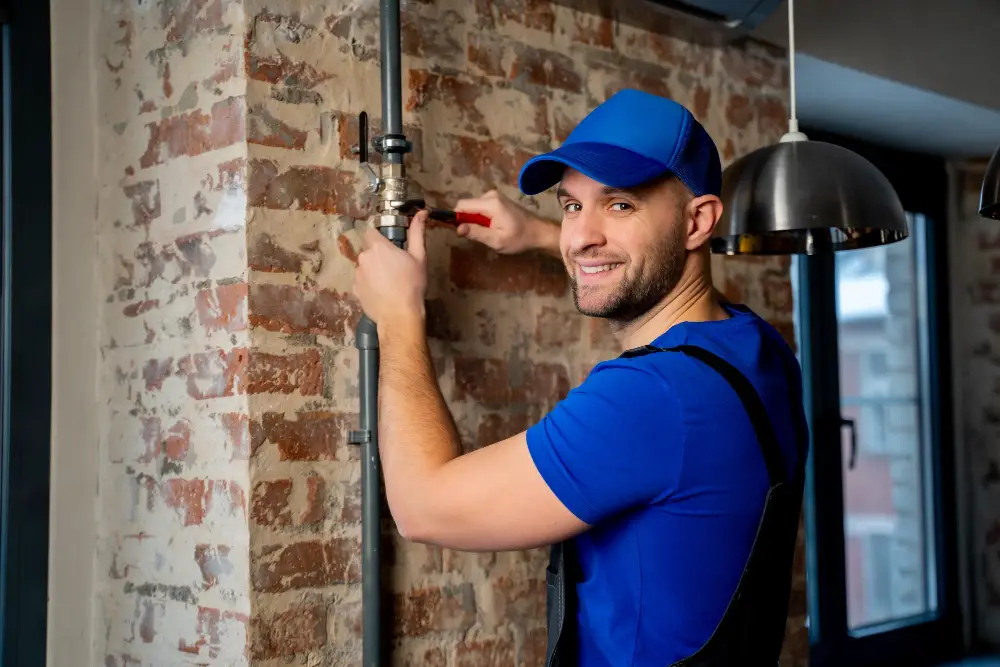
These are pre-made sleeves that fit snugly over your pipes, providing a clean and polished look. Pipe covers come in a variety of materials, including plastic, metal, and wood veneer.
They can be painted or stained to match your decor or left as-is for an industrial vibe.
If you’re feeling crafty, you can even make your own pipe covers using materials like PVC piping or foam insulation tubes. Simply cut them to size and slide them over the exposed pipes.
Pipe covers are especially useful in areas where space is limited since they don’t take up any extra room like other decorative solutions might. Plus, they’re easy to install with just a few screws or adhesive strips.
Suspended Ceilings

Not only do they hide unsightly plumbing, but they also provide additional insulation and soundproofing. Suspended ceilings are made up of a grid system that supports ceiling tiles or panels.
The grid is attached to the existing ceiling joists using wires or hangers.
One of the benefits of suspended ceilings is that they come in many different styles and materials, so you can choose one that complements your decor. For example, if you have an industrial-style space with exposed brick walls and concrete floors, consider installing metal tiles for a cohesive look.
Another advantage of suspended ceilings is their accessibility; if any repairs need to be done on your plumbing system down the line it will not require tearing down drywall as everything will still remain accessible through removable panels.
Creative Camouflage
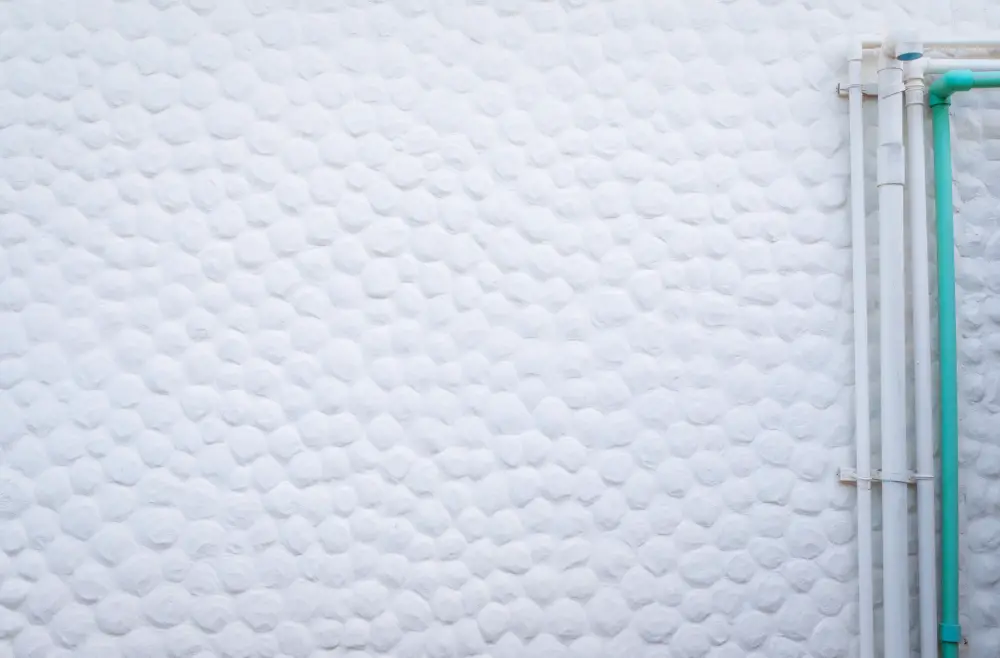
This technique involves painting or covering the pipes with materials that blend in with their surroundings. For example, if you have exposed pipes in your kitchen, consider painting them the same color as your cabinets or walls.
Alternatively, wrap them in fabric that matches your curtains or tablecloth.
Another option is to use wallpaper designed specifically for pipe coverings. These wallpapers come in a variety of patterns and colors and can be easily applied over existing piping.
Under-floor Solutions
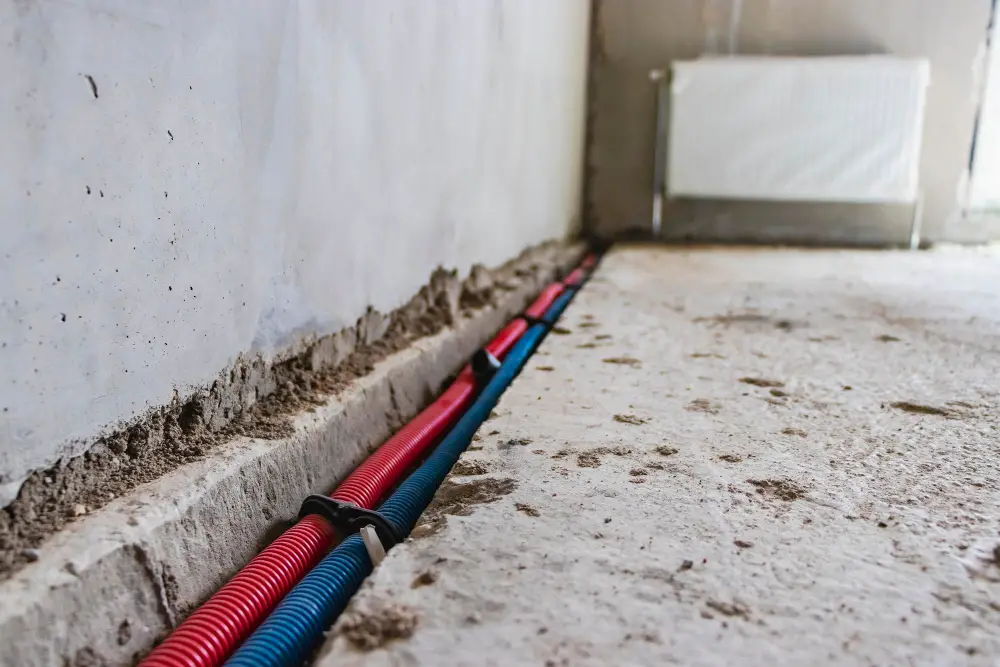
This solution is not only practical but also adds a touch of elegance to your home decor. You can install a raised floor system that allows for easy access to the pipes while keeping them out of sight.
Alternatively, you can create an entirely new subfloor with built-in channels for plumbing and electrical wiring.
Another option is to use decorative grates or vents that blend seamlessly into your flooring material, such as wood or tile. These covers come in various sizes and styles and are designed specifically for concealing unsightly plumbing components.
Under-floor solutions work best when planned during construction or renovation projects since they require some structural changes to accommodate the new design elements properly. However, if you’re handy with tools and have some DIY skills, it’s possible to retrofit this type of solution into an existing space.
Plant Displays
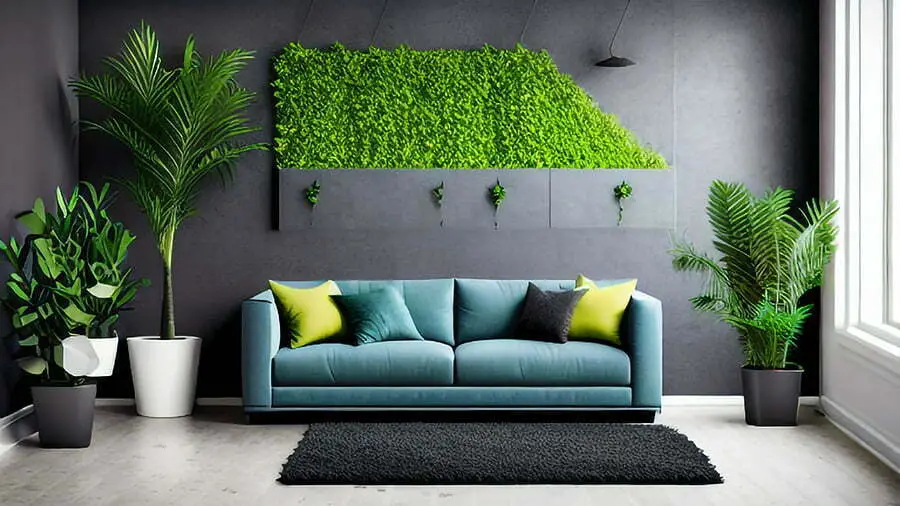
Choose plants with long trailing vines like pothos or ivy for vertical pipes, or opt for taller leafy varieties like fiddle-leaf figs or snake plants for horizontal ones. Not only will your space look more inviting and lively with these green accents, but it will also help distract from those pesky plumbing eyesores.
Soffits and Bulkheads
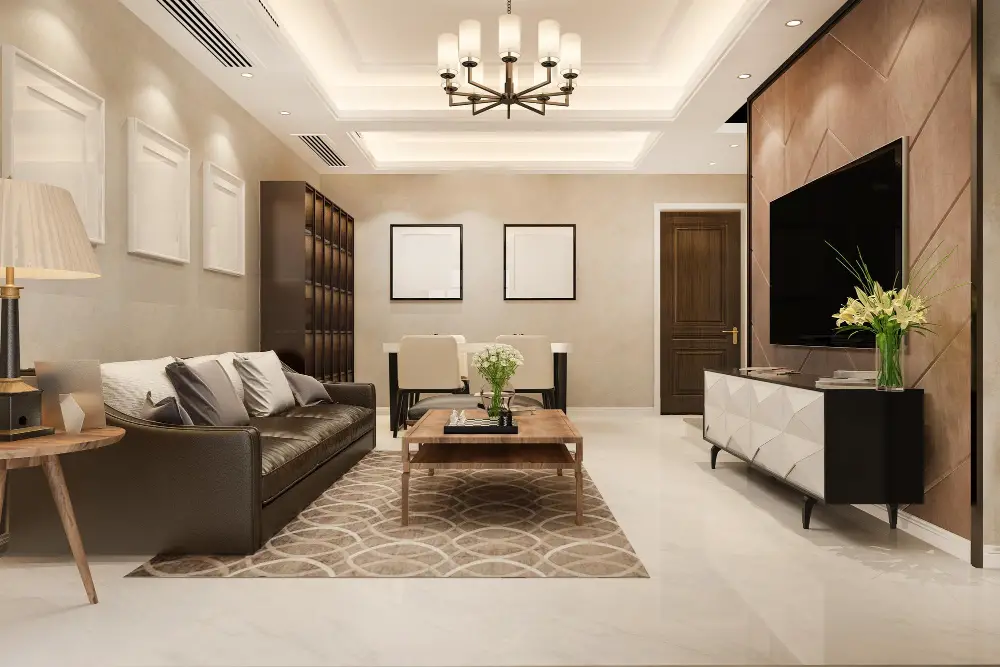
These structures can be built around the pipes, creating a seamless look that blends in with the rest of your decor. Soffits are typically used to cover up exposed ductwork or wiring, but they can also be used for plumbing pipes.
They’re essentially a box-like structure that’s attached to the ceiling and walls, covering up any unsightly elements.
Bulkheads work similarly but are usually larger than soffits and may extend down from the ceiling as well as along walls. They create an architectural feature out of what would otherwise be an eyesore.
Both soffits and bulkheads come in various shapes, sizes, materials (such as drywall or wood), colors (paintable) finishes (textured or smooth), making them versatile enough for any room design style you have chosen.
Bathroom Columns
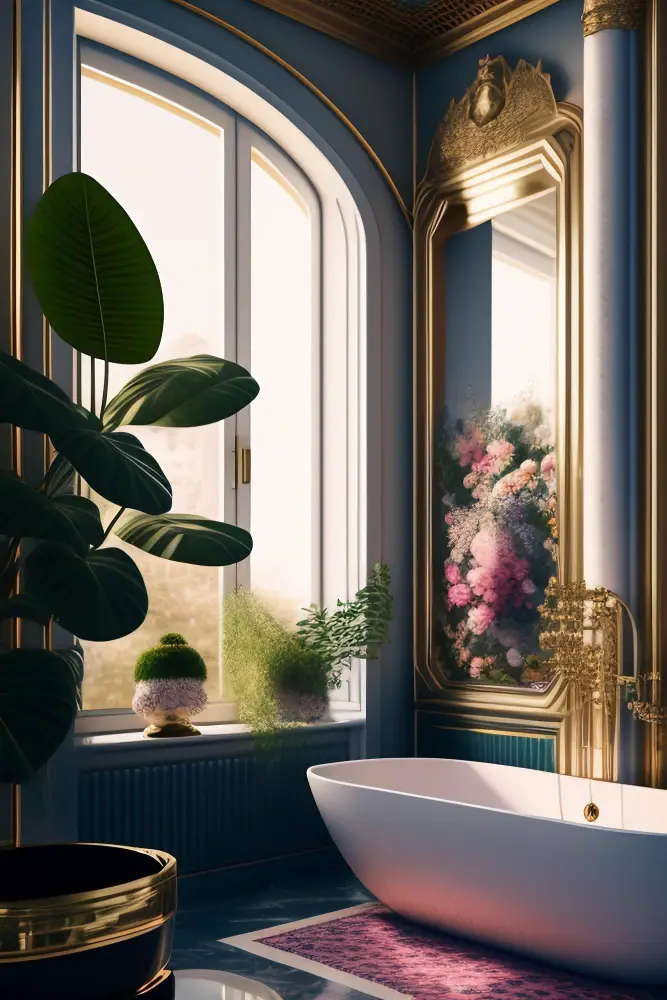
Not only do they add an elegant touch to the space, but they can also serve as functional storage units. You can build custom columns around the pipes and use them to store towels or other bathroom essentials.
To create these decorative features, start by measuring the height and width of your exposed pipes. Then cut pieces of wood or MDF board to fit around each pipe section.
Use screws or nails to attach these boards together in a column shape.
Once you’ve built your column structure, it’s time for finishing touches like paint or wallpaper that matches your existing decor style.
Curtain Covers

This is an especially great option if you have exposed pipes in your bathroom or laundry room. Simply install a tension rod above the pipes and hang some curtains that match your decor style.
You can choose from sheer fabrics that allow light to pass through or heavier materials for more privacy.
One of the benefits of using curtain covers is their versatility; they can be easily removed when access to the pipe is needed, making them ideal for rental properties where permanent solutions may not be allowed.
Another advantage of this method is its affordability; it’s much cheaper than building custom cabinetry or installing suspended ceilings. Plus, with so many different styles and colors available on the market today, you’re sure to find something that fits your taste perfectly.
In-wall Storage
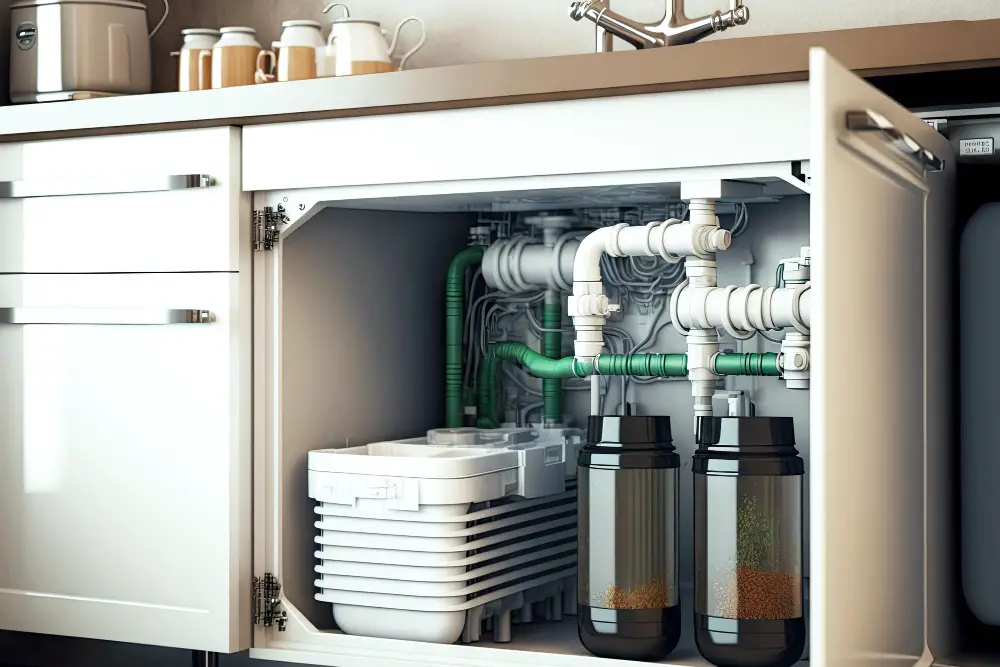
By creating recessed shelves or cabinets in the wall, you can effectively conceal any exposed pipes and create a seamless look that blends in with the rest of your decor. This technique works particularly well in bathrooms and kitchens where there are often multiple plumbing fixtures that need to be hidden.
To create an in-wall storage solution, you’ll first need to identify which walls have plumbing running through them. Once you’ve done this, consult with a professional contractor or plumber who can help ensure that any modifications made won’t interfere with the integrity of your home’s plumbing system.
Once you have determined which walls are suitable for modification, consider what type of shelving or cabinetry would work best for your needs. Recessed shelves provide easy access and ample storage space without taking up valuable floor space while built-in cabinets offer more concealed storage options.
Custom Cabinetry

Not only does it provide ample storage space, but it also adds value and style to your home. You can choose from a variety of materials such as wood or metal and customize the design according to your preferences.
For instance, if you have exposed pipes in the kitchen area, consider installing floor-to-ceiling cabinets that match the existing decor of your kitchen.
Alternatively, if you want something more unique and eye-catching in other areas of your home like living rooms or bedrooms then opt for open shelving with built-in pipe covers that blend seamlessly into their surroundings while still providing easy access when needed.
Paint and Stickers

You can use paint to match the color of your walls or create an accent by painting them in a contrasting shade. Stickers, on the other hand, offer endless design possibilities with minimal effort.
For instance, you could choose from various patterns such as stripes or polka dots that will add some fun flair to any room. Alternatively, you could opt for more intricate designs like floral motifs or geometric shapes that will give your space an artistic touch.
When using paint or stickers on plumbing pipes make sure they are clean and dry before applying anything onto them. Also be mindful not to cover up any important markings such as hot/cold water indicators which may be necessary for future maintenance work.
Rope and Fabric Wraps
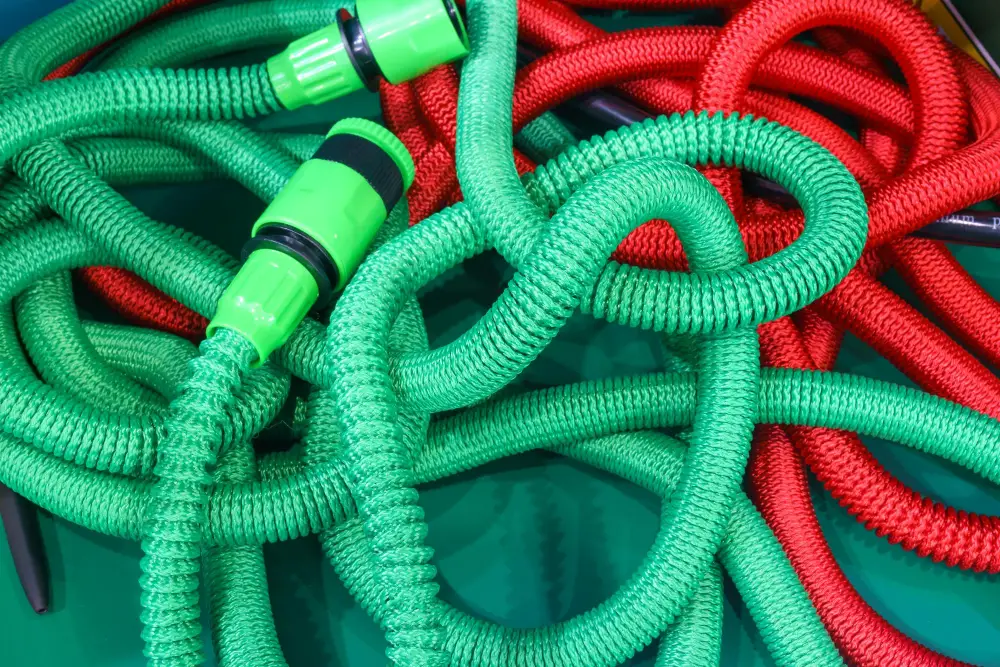
This technique works particularly well for exposed pipes that are located in more rustic or bohemian-style spaces. To achieve this look, simply wrap the pipe with a length of thick rope, securing it at intervals with hot glue or twine.
Alternatively, you can use strips of colorful fabric to create a similar effect.
Not only does this method add visual interest to your space, but it also helps protect the pipes from damage and insulates them against temperature changes.
Wrap Fake Foliage Around Exposed Pipes
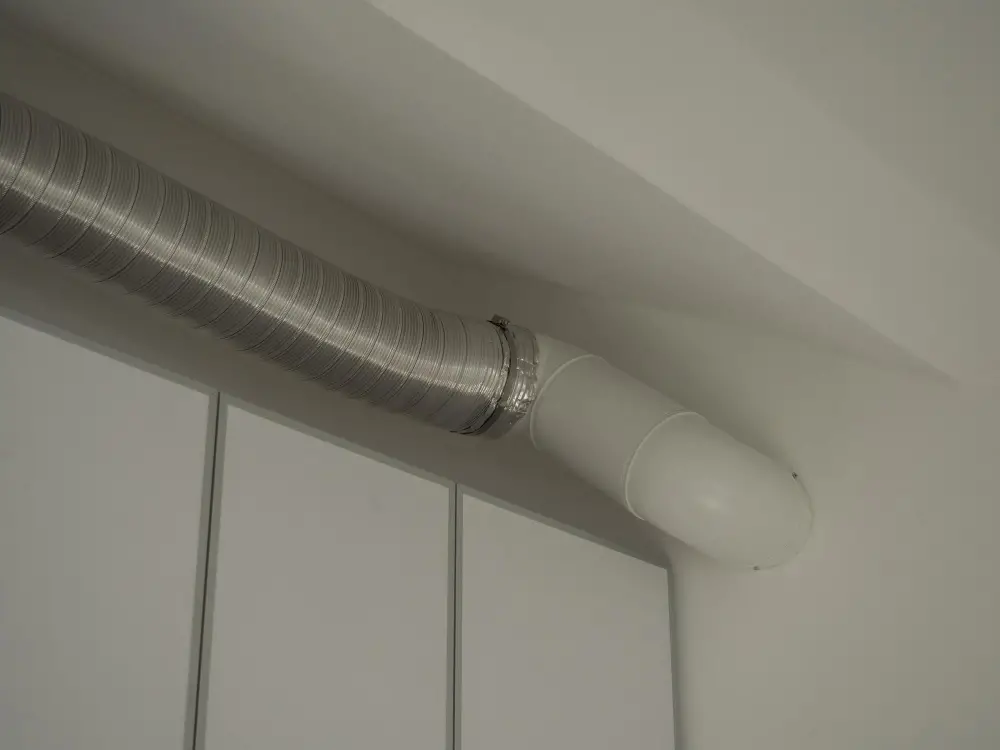
This is an especially great option if you want to add some greenery to your space without the hassle of watering and maintaining real plants. You can find artificial vines, leaves, or flowers at most craft stores or online retailers.
To wrap the pipes with faux foliage, start by measuring the length of each pipe section that needs covering. Then cut pieces of artificial vine or leaf garland slightly longer than each section’s measurement.
Wrap these around the pipes tightly until they are completely covered.
This method works particularly well in bathrooms where humidity levels are high as it won’t damage any live plants due to moisture exposure.
Turn Pipes Into Side Tables or Cat Trees
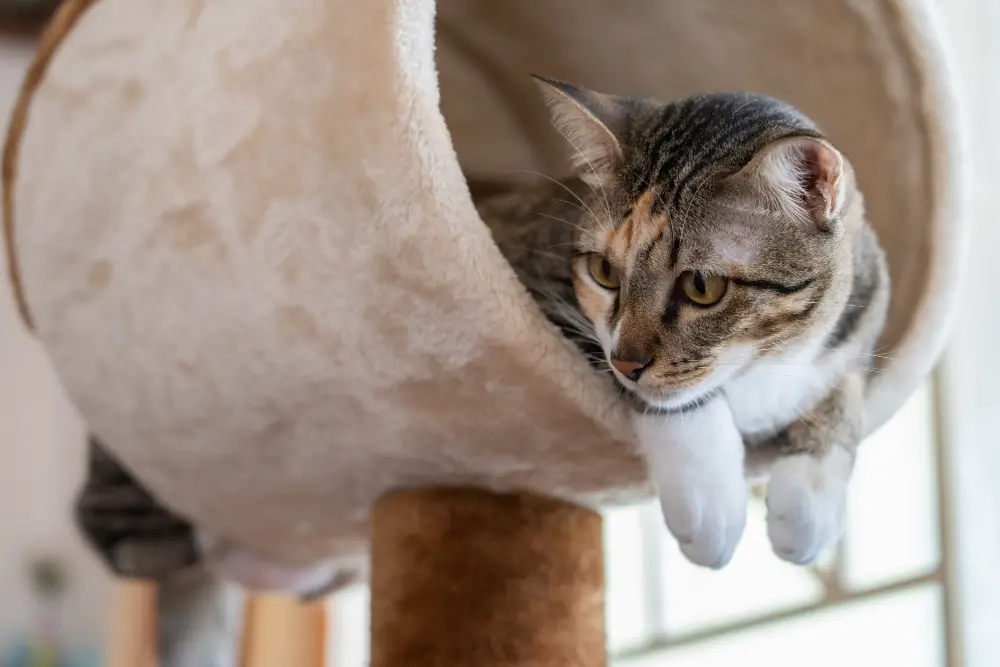
By adding a flat surface on top of the pipe and securing it in place with brackets or screws, you can create an industrial-chic table that’s perfect for holding drinks or displaying decor. Alternatively, if you have furry friends at home who love to climb and play, consider wrapping the exposed pipes with sisal rope to create an eye-catching cat tree that blends seamlessly with your decor.
Not only will this solution help conceal your plumbing pipes but also add some unique character to your space while providing practical use as well!
How to Hide Outdoor Pipes
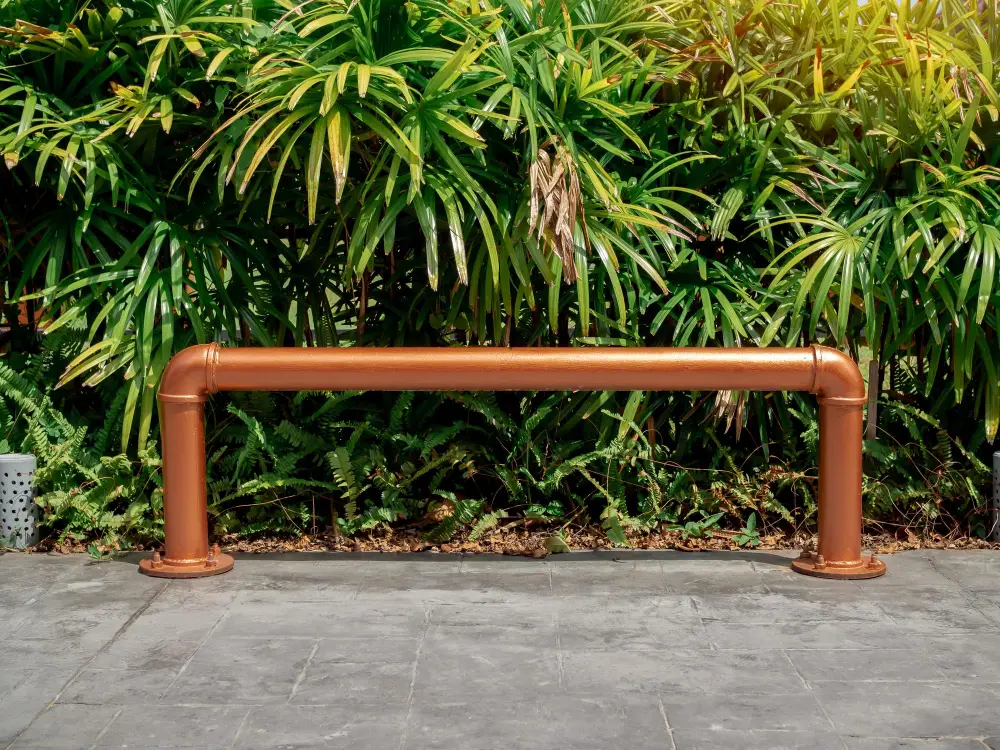
One option is to use plants and shrubs as natural camouflage. You can plant tall grasses or bushes around the pipes, which will not only conceal them but also add some greenery to your space.
Another option is to build a small fence around the area where the pipes are located. This can be done using wood panels or lattice screens and painted in a color that complements your home’s exterior.
Alternatively, you could create an outdoor feature out of those unsightly pipes by turning them into part of an artistic installation such as a fountain or sculpture.
Whatever method you choose for hiding outdoor plumbing pipes, make sure it doesn’t interfere with their functionality and accessibility for maintenance purposes. With these tips in mind, say goodbye to ugly exposed piping outside!
FAQ
What are some innovative techniques for incorporating visible pipes into your interior decor?
Some innovative techniques for incorporating visible pipes into interior decor include painting them in bold colors, using them as shelves or clothing racks, or integrating them into steampunk-themed designs.
How can utilizing different materials or pipe coverings enhance the aesthetics of a space while hiding plumbing pipes?
Utilizing different materials or pipe coverings can enhance the aesthetics of a space by effectively concealing plumbing pipes while adding visual interest through diverse textures and designs.
Are there any multi-functional furniture or design solutions that can aid in masking plumbing pipes while also serving other purposes?
Yes, multi-functional furniture and design solutions, such as decorative covers, cabinets, and shelves, can effectively mask plumbing pipes while providing additional storage and aesthetic value to a space.
